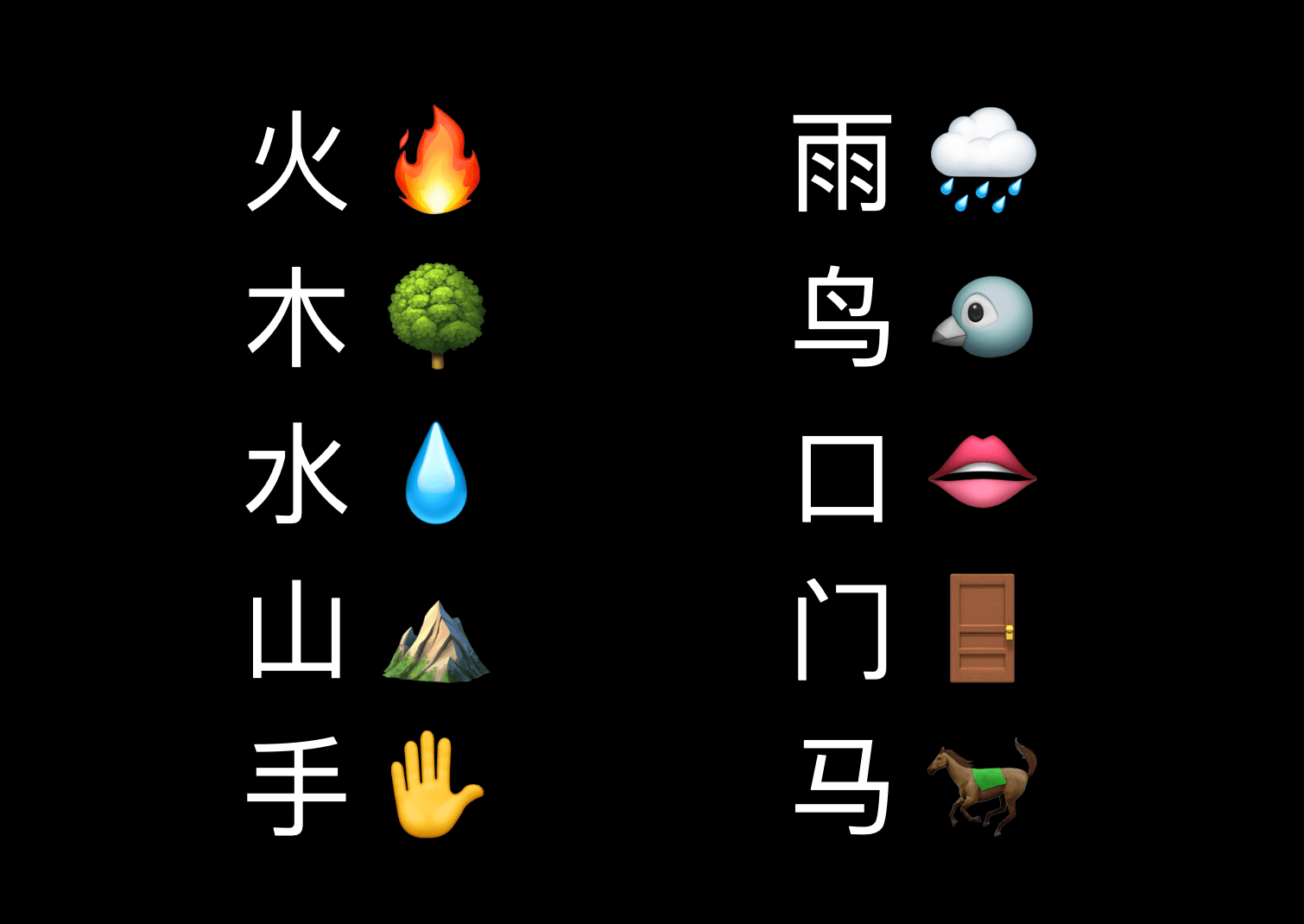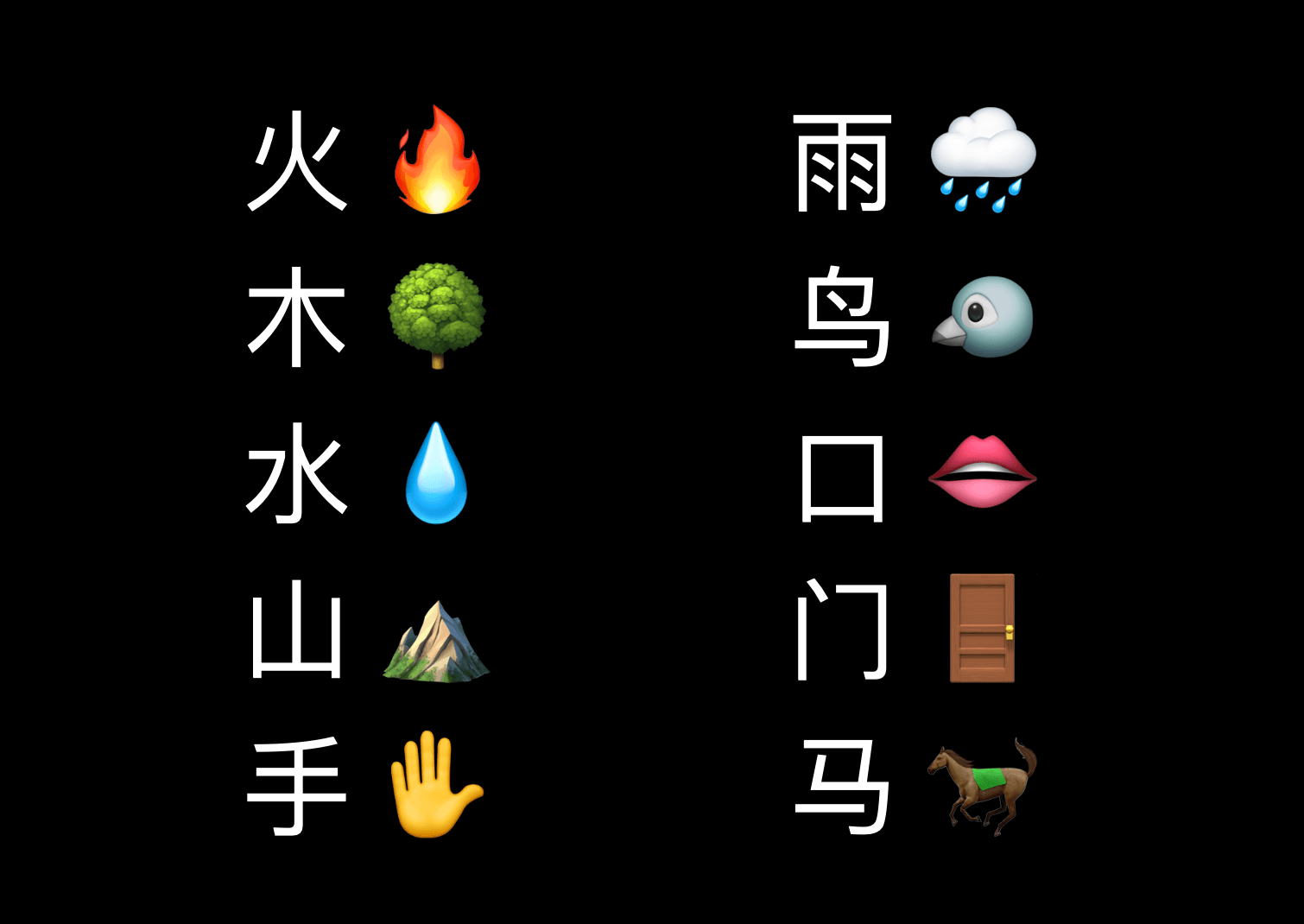
火 🔥
木 🌳
水 💧
水 💧
山 ⛰️
手 ✋
手 ✋
雨 🌧️
鸟 🐦
口 👄
门 🚪
马 🐎
How commonly are these found in Chinese characters? 20%
火 🔥 639 characters (out of 49,030) = 1.3%
木 🌲 1,369 characters (out of 49,030) = 2.8%
水 💧 1,595 characters (out of 40,000) = 3.9%
山 ⛰️ 636 characters (out of 49,030) = 1.3%
手 ✋ 1203 characters (out of 49,030) = 2.45%
雨 🌧️ 298 characters (out of 49,030) = 0.6%
鸟 🐦 750 characters (out of 49,030) = 1.5%
口 👄 1,146 characters (out of 40 000) = 2.8%
门 🚪 246 characters (out of 49,030) = 0.5%
马 🐎 472 characters (out of 49,030) = 1%
人 🧍 794 characters (out of 49,030) = 1.6%
Total = 20% of Chinese characters use these
This is an example of the 80:20 rule. If you can learn these characters you will be able to notice them in roughly 20% of Chinese characters. This will give you an indication of the meaning or sound.
There are basically 6 types of Chinese characters.
Type 1: Pictograms 象形字 (xiàngxíngzì)
Type 2: Phono-semantic characters 形声字 (xíngshēngzì)
Type 3: Simple ideograms 指事字 (zhǐshìzì)
Type 4: Compound ideograms 会意子 (huìyìzì)
Type 5: Transfer characters 转注字 (zhuǎnzhùzì)
Type 6: Loan characters 假借字 (jiǎjièzì)
Type 1: Pictograms 象形字 (xiàngxíngzì)
These make up about 4% of Chinese characters. They look like what they are.
Type 2: Phono-semantic characters 形声字 (xíngshēngzì)
These look like what they mean and they sound. These make up about 80% of Chinese characters.
Type 3: Simple ideograms 指事字 (zhǐshìzì)
These represent an idea, or concept eg., 下 上 represents down and up
Type 4: Compound ideograms 会意子 (huìyìzì)
These are a mixture of two or more pictograms or ideograms
Type 5: Transfer characters 转注字 (zhuǎnzhùzì)
The characters 考 (kǎo; to test) and 老 (lǎo; old) are considered 转注 (zhuǎnzhù) characters because they were previously interchangeable, but over time they started to represent different things and their meanings drifted apart.
Type 6: Loan characters 假借字 (jiǎjièzì)
